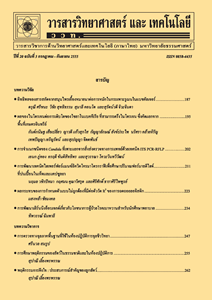การเลือก lead เพื่อติดตามคลื่น ST-segment ในผู้ป่วยกล้ามเนื้อหัวใจขาดเลือด : การตัดสินใจทางคลินิกในหอผู้ป่วยวิกฤตและฉุกเฉิน
Main Article Content
Abstract
บทคัดย่อ
การตรวจคลื่นไฟฟ้าหัวใจ 12-lead เป็นการตรวจวินิจฉัยภาวะกล้ามเนื้อหัวใจขาดเลือด ซึ่งเป็นเพียงการตรวจคลื่นไฟฟ้าหัวใจ ณ ขณะใดขณะหนึ่งเท่านั้น ปัจจุบันพบว่าการเลือกติดตามคลื่นไฟฟ้าหัวใจต่อเนื่องในผู้ป่วยที่มีความเสี่ยงต่อการตายหรือขาดเลือดของกล้ามเนื้อหัวใจด้วย ST-segment monitoring ช่วยในการเฝ้าระวังการเกิดกล้ามเนื้อหัวใจขาดเลือดชนิดไม่มีอาการเจ็บหน้าอก (silent ischemia)ได้ ทำให้สามารถให้การรักษาได้อย่างทันถ่วงที การเลือก Lead เพื่อการเฝ้าติดตามการเปลี่ยนแปลงคลื่นไฟฟ้าหัวใจ ST-segment (ST-segment Monitors) ให้เหมาะสมกับอาการทางคลินิกของผู้ป่วยแต่ละคนเป็นทักษะที่ต้องใช้การวิเคราะห์ด้วยความรู้และความเข้าใจเพื่อช่วยในการตัดสินใจ ซึ่งเป็นทักษะที่จำเป็นสำหรับพยาบาลในหอผู้ป่วยวิกฤตและฉุกเฉิน ดูเหมือนจะไม่ใช่เรื่องยากนักแต่ในทางปฏิบัติพบว่ามีการเลือก Lead เพื่อการติดตามแบบทั่วไป (routine monitoring) โดยไม่ได้มีความสัมพันธ์กับประวัติโรคหลอดเลือดหัวใจของผู้ป่วย การเลือก Lead ให้เหมาะสมกับผู้ป่วยโรคหลอดเลือดหัวใจแต่ละราย (ST-fingerprint) เป็นการเพิ่มประสิทธิภาพของการเฝ้าระวังการติดตามคลื่นไฟฟ้าหัวใจให้ตรวจพบภาวะขาดเลือดที่รวดเร็วและแม่นยำ ผู้เขียนจึงได้ทบทวนรวบรวมแนวปฏิบัติทางคลินิกและงานวิจัยที่เกี่ยวข้องเพื่อทำความเข้าใจเกี่ยวกับการเลือก Lead และการติดตามคลื่น ST-segment เพื่อนำมาประกอบการตัดสินใจของพยาบาลผู้ปฏิบัติงานช่วยให้เพิ่มประสิทธิภาพการเฝ้าระวังและติดตามคลื่นไฟฟ้าหัวใจ
คำสำคัญ : การตัดสินใจทางคลินิก; การเลือก Lead; การติดตาม ST-segment; ผู้ป่วยที่เสี่ยงต่อกล้ามเนื้อหัวใจขาดเลือด
Abstract
The 12-lead eletrocardiography (ECG, EKG) is standard for detecting ischemic coronary events, its provides a static snapshot rather than the continuous recording of dynamic changes that may be visualized by using continuous ST-segment monitoring. Continuous ST-segment monitor may be helpful in detecting silent ischemia, reducing delays to intervention, and increasing chances for maintaining viable myocardial tissue. Nurses should base lead selection on the priority monitoring needs of each patient. Althrough this concept seems simple but monitoring the routines of critical care nurses has indicated that nurses do not select leads according to diagnosis or history of coronary disease. Nurses responsible for cardiac monitoring should receive the appropriate ongoing practice to enhance critical thinking about tailoring lead selection to a patient-specific template call an “ST-fingerprint”. Because early and accurate identification of ischemia requiring process that acute care nurses use critical thinking about a monitoring process they understand well. Therefore, in this article, we analyze and interpret the research to develop proficiency standards for all staff involved to the monitoring process to ensure patient safety and effective monitoring.
Keywords: clinical judgement; lead selection; ST-segment monitoring; myocardial injury and ischemia


